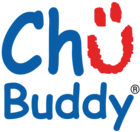As a preschool teacher, you are often the first adult, other than family, to spend a great deal of quality time with the children in your class. You also have extensive knowledge of developmental milestones. With these two factors, you’re often the first to suggest a child may be facing undiagnosed challenges. You also have a number of children in your care each day who have a difficult time leaving their parents. Children facing either, or both, of these challenges can benefit greatly from chewables in the classroom.
Which Students Would Benefit From A Chew?
Chewables benefit children who need oral sensory input. Oftentimes, children with diagnoses such as autism spectrum disorder or sensory processing disorder benefit from chewables. The tool can help children with anxiety, including separation anxiety, as well.
When children use a chewable, they have an easier time soothing themselves. When they are able to comfort themselves, they will be able to focus on social, emotional, and academic growth in the classroom at a deeper level than they could when their oral need was not being met.
If you have a child in your class who seems like they would benefit from having a chewables accessible, watch to see if they show signs of an unmet oral need. You may see these students chewing on their shirt collars or sleeves or biting classroom objects. They may consistently bite their tongue, lips, fingernails, hands, or arms. They may suck their fingers or thumbs, or lick objects near to them.
How Can Chewables Be Used In The Classroom?
Children’s chewables can be a supportive and exciting addition to your classroom. However, you likely know that almost anything can become a distraction in the minds of little ones. Come up with a plan before you introduce the chewables to ensure that they can be used as a valuable tool by the children who need them most.
Introduce Chewables Individually
When you see that a child in your class could benefit from a chewables, do your best to set aside time for a personal lesson. Talk with the child in a comforting and supportive style. Let them know that you have a tool that you’re excited to share with them.
Say, “I see you’ve been chewing on your shirt lately. I have a special tool that’s much more fun to chew on. You can borrow it whenever you need to!” Make sure the child doesn’t feel bad about their chewing, and let them share in the excitement of a tool just for them.
Teach That Chewables Are Tools
Even though you introduce chewables individually, curious classmates will likely have questions. Some may even feel a bit of jealousy. You’ll want to answer any questions that other children have, so the child with the chew does not feel any pressure or social discomfort.
You can share information about children’s chews as questions arise, or you can take time at a group gathering to introduce the tools to the class. Let the children know that chews are tools, and they help those who use them. Say, “Chewables are available to students who have had a personal lesson to learn about them. Please talk to me individually if you feel you’d like a chew while you work!”
Have A Plan For Personalization or Sanitization
You see firsthand how quickly illness can spread in a preschool classroom. With a tool that is used in children’s mouths, you’ll need to have a concrete plan for sanitary success. First, let the children know that chews are not something they should share with each other. If there are enough chewables for the classroom, it is best to assign a chew to each individual rather than sharing. In some cases, however, it may be necessary to share the chews. In these cases, sanitization is very important.
If your classroom is sharing chewable, you may also want to consider setting out a bucket for used chewable. Teach your students to place their chew in the bucket when they are done, so it is not left laying around the classroom where another child may pick it up. You can then sanitize the chews before they are used again.
How To Choose A Children’s Chew
There are many options available for chews today. At Chubuddy, we have a chewable for every chewer. Our Light Chews or Medium Chews may be a good choice for your classroom needs. If you have a real strong chewer that has destroyed the Light or Medium chewables, you will definitely want some Strong Chews available for these students. Strong doesn’t mean rock hard any longer. Zilla Chews, for example, are soft, fun to chew, and come with a lanyard for accessibility as well. Handheld chews are great for classroom use as well.
Chewables in the preschool classroom can bring many benefits. Watch for the need for oral stimulation in your children, and consider introducing chews as tools if you see the signs often. Remember to introduce the chewables individually, treat them as tools, and have a plan for sanitization. Your students will thank you for providing another tool for their success.
If you have any further questions reach out to our email Info@chubuddy.com
Wrote By: Jessica A
